
CELESTIAL MECHANICS & DYNAMICAL ASTRONOMY
Scope & Guideline
Bridging Mathematics and Astronomy for a Deeper Cosmic Understanding
Introduction
Aims and Scopes
- Orbital Dynamics and Stability:
Research on the stability and evolution of celestial orbits, including perturbations caused by celestial bodies and external forces. - Resonant Dynamics:
Exploration of resonant interactions between celestial bodies, particularly in multi-body systems, and their implications for orbital behavior. - Numerical Simulations and Analytical Methods:
Utilization of computational methods and analytical techniques to solve complex dynamical problems in celestial mechanics. - Asteroid and Planetary Dynamics:
Investigation of the dynamics of asteroids and planetary systems, focusing on their motion, collisions, and interactions. - Chaotic Dynamics and Bifurcation Theory:
Study of chaotic behavior in dynamical systems and the conditions under which bifurcations occur in celestial mechanics. - Application of Machine Learning in Dynamics:
Incorporation of machine learning techniques to analyze and predict dynamical behaviors in celestial systems.
Trending and Emerging
- Interdisciplinary Approaches:
There is an increasing trend towards integrating knowledge from different fields, such as machine learning and computational physics, into celestial mechanics research. - Advanced Computational Techniques:
The rise of high-performance computing has led to more sophisticated numerical simulations that explore complex dynamical systems in greater detail. - Investigation of Exoplanetary Dynamics:
A burgeoning interest in the study of exoplanetary systems, particularly their stability and long-term evolution, is becoming more prominent in recent publications. - Dynamic Modelling of Space Debris:
With the growing concern over space debris, research focusing on the dynamics and interactions of debris in Earth's orbit is gaining traction. - Chaos and Nonlinear Dynamics:
There is a notable increase in studies exploring chaotic behaviors and nonlinear dynamics within celestial systems, reflecting a deeper understanding of complex gravitational interactions.
Declining or Waning
- Classical Perturbation Theory:
Traditional methods of perturbation theory are becoming less prevalent as more advanced computational techniques and machine learning approaches are adopted. - Simplistic Models of Planetary Motion:
Research relying on overly simplistic models of planetary motion is declining, as there is a growing demand for more complex models that account for various perturbative effects. - Low-Precision Orbital Estimation:
The focus on low-precision methods for orbital determination is waning in favor of high-precision techniques that integrate advanced numerical methods and observational data. - Static Analyses of Celestial Mechanics:
Static analyses that do not consider time-dependent effects or dynamic interactions are becoming less common, with a shift towards dynamic and time-sensitive models.
Similar Journals

DISCRETE AND CONTINUOUS DYNAMICAL SYSTEMS-SERIES B
Innovating Insights in Applied MathematicsDISCRETE AND CONTINUOUS DYNAMICAL SYSTEMS-SERIES B, published by the American Institute of Mathematical Sciences (AIMS), is a premier journal in the fields of Applied Mathematics and Discrete Mathematics and Combinatorics. With an ISSN of 1531-3492 and an E-ISSN of 1553-524X, the journal addresses significant advances in the mathematical sciences, particularly focusing on the analysis of dynamical systems through discrete and continuous approaches. As recognized in the 2023 Scopus ranks, it holds a commendable position, being classified in the Q2 category for both its mathematical domains, reflecting its high-quality publications and substantial impact on ongoing research. With a converged publication timeline from 2001 to 2025, the journal plays an essential role in facilitating innovative mathematical discourse, making it an invaluable resource for researchers, professionals, and students eager to explore the latest developments and applications in this dynamic field. Although specific open access options are not currently stated, the journal remains committed to disseminating valuable content for those passionate about the intricacies of mathematical systems.
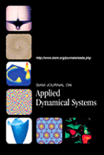
SIAM JOURNAL ON APPLIED DYNAMICAL SYSTEMS
Connecting Researchers to the Pulse of Dynamical Systems.SIAM Journal on Applied Dynamical Systems, published by SIAM Publications, stands as a premier platform for disseminating vital research in the fields of applied dynamical systems, analysis, and modeling and simulation. With a commendable impact factor reflecting its scholarly influence, this journal ranks in the Q1 category for both analysis and modeling/simulation in 2023, positioning it among the top resources in these disciplines. Enthusiastic researchers, professionals, and students will benefit from its rigorous peer-reviewed content that spans innovative methodologies and applications in various scientific domains. Since its inception in 2002 and continuing through 2024, the journal aims to bridge theoretical insights with practical challenges, facilitating advancements that drive progress in dynamical systems research. Contributors and readers alike can expect to engage with high-quality articles that foster meaningful dialogue, making this journal an indispensable resource for the academic community.
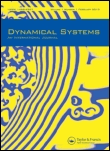
DYNAMICAL SYSTEMS-AN INTERNATIONAL JOURNAL
Unraveling Complexities in Dynamical Systems AnalysisDynamical Systems - An International Journal, published by Taylor & Francis Ltd, serves as a vital resource in the fields of mathematics and computer science applications. With an ISSN of 1468-9367 and E-ISSN 1468-9375, this journal has established a significant presence since its inception in 1996 and continues to contribute valuable insights through 2024. Although it holds a Q3 ranking in both Computer Science Applications and Mathematics (miscellaneous), it is a platform for disseminating innovative research and applications relating to dynamical systems analysis and theory. Despite recent challenges reflected in its Scopus rankings, with percentiles at the 30th and 10th for general mathematics and computer science applications respectively, the journal remains committed to fostering interdisciplinary perspectives and providing a forum for the exchange of ideas among academics, professionals, and students. Open access options ensure that research findings reach a broader audience, enhancing the journal's impact and relevance in a rapidly evolving field.

P-Adic Numbers Ultrametric Analysis and Applications
Fostering Global Collaboration in Mathematical ExplorationP-Adic Numbers Ultrametric Analysis and Applications is a distinguished academic journal dedicated to the exploration and application of p-adic numbers and ultrametric analysis, an essential area of research within the broader field of mathematics. Published by PLEIADES PUBLISHING INC in the United States, this journal serves as a vital platform for researchers, professionals, and students alike, offering invaluable insights into both theoretical advancements and practical applications of p-adic methodologies. With its commitment to open access, the journal ensures that its content is readily available to a global audience, fostering collaboration and dissemination of knowledge. As reflected in its 2023 Q3 ranking in the mathematics category, it continues to attract a diverse range of contributions, from groundbreaking theoretical studies to innovative applied research, making it an essential resource for anyone invested in advancing their understanding of ultrametric analysis and its implications across various mathematical disciplines. Published continuously from 2009 to 2024, the journal not only encourages rigorous scholarly discussion but also emphasizes the importance of interdisciplinary approaches in addressing contemporary mathematical challenges.
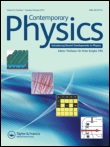
CONTEMPORARY PHYSICS
Illuminating Contemporary Discoveries in PhysicsCONTEMPORARY PHYSICS, published by Taylor & Francis Ltd, stands as a notable journal in the field of physics and astronomy, offering a comprehensive platform for the dissemination of cutting-edge research and developments since its inception in 1959. With an Impact Factor that reflects its solid position within the academic community, as evidenced by its Q2 ranking in the 2023 category of Physics and Astronomy (miscellaneous) and a Scopus Rank of 111 out of 243, this journal plays an essential role in bridging theoretical advances and practical applications. Researchers and professionals are encouraged to explore its diverse scope, which aims to foster innovative ideas and foster interdisciplinary collaboration. Although not currently an open access journal, CONTEMPORARY PHYSICS is committed to maintaining the highest standards of editorial excellence and provides valuable insights across converged eras of research from 1959 to 2024, making it indispensable for those dedicated to advancing their knowledge and contributions in the realm of physics.
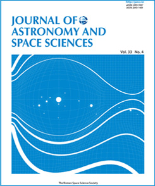
Journal of Astronomy and Space Sciences
Where Groundbreaking Research Meets Open Access.The Journal of Astronomy and Space Sciences, published by the Korean Space Science Society, is a premier open-access platform dedicated to advancing the fields of astronomy, astrophysics, and space sciences. Established in 1984, the journal has been instrumental in disseminating high-quality research findings, fostering collaboration among scientists globally, and providing insights into the dynamics of our universe. With an ISSN of 2093-5587 and an E-ISSN of 2093-1409, the journal has gained notable recognition, currently ranking in the Q3 quartile in Earth and Planetary Sciences and Physics and Astronomy as of 2023. Although the journal's H-Index is currently unspecified, its commitment to rigorous peer-review processes and open-access availability ensures that groundbreaking research is accessible to a wide audience. Based in Seoul, South Korea, the journal is poised to continue supporting innovative research through 2024 and beyond. Researchers, professionals, and students alike will find valuable resources and opportunities within its pages, further establishing this journal as a crucial resource in the exploration of the cosmos.
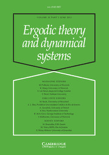
ERGODIC THEORY AND DYNAMICAL SYSTEMS
Bridging Theory and Application in DynamicsERGODIC THEORY AND DYNAMICAL SYSTEMS is a premier academic journal published by Cambridge University Press, dedicated to the intricate fields of ergodic theory and dynamical systems. With an ISSN of 0143-3857 and E-ISSN 1469-4417, the journal serves a global audience from its base in the United Kingdom. Renowned for its rigorous peer-reviewed content, it boasts a prestigious Q1 classification in both Applied Mathematics and Mathematics (miscellaneous) categories as of 2023 and enjoys a significant rank in the Scopus database, highlighting its impact in the mathematical community. The journal encompasses high-quality research and innovative methodologies spanning from the foundational aspects of ergodic theory to practical applications in various fields, making it an indispensable resource for researchers, professionals, and students alike. With a commitment to advancing mathematical understanding, ERGODIC THEORY AND DYNAMICAL SYSTEMS is a vital platform for disseminating exceptional research and fostering scholarly discourse through its continuous publication cycle from 1981 to 2024.

DISCRETE AND CONTINUOUS DYNAMICAL SYSTEMS
Unraveling the complexities of mathematics, one study at a time.DISCRETE AND CONTINUOUS DYNAMICAL SYSTEMS is a prestigious academic journal published by the American Institute of Mathematical Sciences (AIMS), dedicated to the dissemination of high-quality research in the fields of Discrete Mathematics, Applied Mathematics, and Dynamical Systems. With an impressive impact factor that places it in the Q1 quartile of several mathematical categories, including an outstanding rank of #20 in Discrete Mathematics and Combinatorics, this journal serves as an essential platform for researchers, professionals, and students to explore innovative methodologies and applications. Since its inception in 1996, the journal has partaken in the convergence of mathematical theories, with its editorial board committed to publishing cutting-edge studies up until 2025. Although it is not open access, the journal's rigorous peer-review process ensures that each article maintains the highest scholastic standards, making it a vital resource in the advancement of mathematical sciences.

Romanian Astronomical Journal
Empowering researchers to reach for the stars.Welcome to the Romanian Astronomical Journal, a distinguished publication operating under the esteemed EDITURA ACAD ROMANE, dedicated to advancing the field of Astronomy and Astrophysics. With a rich tradition rooted in Romania, this journal aims to foster scholarly discourse and disseminate pivotal research findings within the cosmic sciences. Although currently not designated as Open Access, the journal remains committed to ensuring that its content meets rigorous academic standards. The Romanian Astronomical Journal holds a commendable position in the academic community, achieving a Q3 ranking in Astronomy and Astrophysics and a Q4 ranking in Space and Planetary Science for 2023, reflecting its contribution to the scientific landscape. With a focus on originality and scholarly excellence, this journal serves as a vital resource for researchers, professionals, and students alike, promoting a deeper understanding of the universe and our place within it. Positioned at the intersection of innovative research and practical application, the Romanian Astronomical Journal invites contributions that push the boundaries of knowledge in our field.
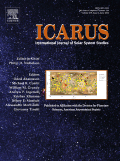
ICARUS
Connecting Scholars to the Stars and Beyond.ICARUS is a prominent peer-reviewed journal dedicated to advancing knowledge in the realm of Astronomy and Astrophysics, as well as Space and Planetary Science. Published by Academic Press Inc, Elsevier Science, this esteemed journal has been contributing to the scientific discourse since 1962 and will continue to do so well into 2024. With an impressive impact factor placing it in the Q2 quartile, ICARUS ranks among the top journals in its field, standing appropriately at #22 out of 90 in Astronomy and Astrophysics and #27 out of 104 in Space and Planetary Science according to Scopus metrics. Researchers, professionals, and students alike benefit from its comprehensive scope, which encompasses a wide array of topics related to planetary processes, space exploration, and astrophysical phenomena. Although it does not currently offer open access, the journal remains a critical resource for scholars seeking to disseminate their findings and engage with cutting-edge research in the exciting fields of astronomy and planetary science.